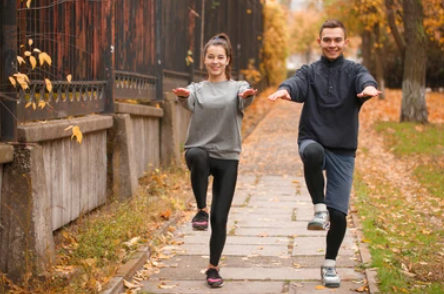It will give you clues on your longevity and future quality
of life.
This test is a powerful predictor of mortality, according to
its creator, Dr Jonathan Myers, a professor at Stanford University, USA.
One in five people cannot do it.
The test? Stand on one leg for 10 seconds.
You have three tries to achieve it.

Why does balance matter?
Many people take their balance for granted, until it is
taken away by eye or ear conditions, or general ageing.
Yet it turns out it is a vitally important clue to your
health, now and into the future.
In 2022, a team of researchers from Brazil, Finland, USA, UK
and Australia published research in the British Journal of Sports Medicine.
They reported that inability to pass the 10 second balance
test was associated with a twofold risk of death from any cause within 10
years.
Without good balance, you are more prone to falls. And falls
are the second leading cause of unintentional injury deaths worldwide.
How to improve your balance
If you tried the test and found it hard, do not worry.
Balance can be improved through simple and low-cost balance training.
Balance is strongly related to strength. The stronger your
muscles, particularly big muscles like your legs and core, the better your
balance is likely to be.
Physiotherapists recommend these exercises to work on your
balance:
1. Start by changing your “base of support”. That is, the
surface you are standing on, for example:
- balance on one leg
- balance with your feet one in
front of the other, like you are standing on a tightrope
- stand on something unstable, such
as cushions, a foam mat or wobble board.
2. Add a change to your visual input
While trying any movement from point 1, try closing your
eyes, turning your head or moving your eyes from side to side or up and down.
This will challenge your vestibular system or inner ear.
3. Add dynamic movement
While doing 1 and 2, try movement such as:
- moving your arms, legs or torso
- holding weights in your hands or
as ankle weights
- combine more complicated
movements like walking along an imaginary tightrope